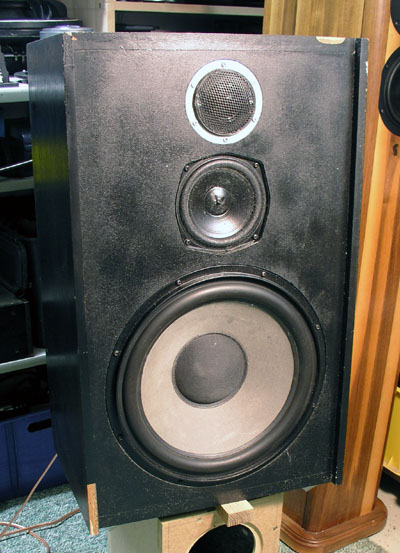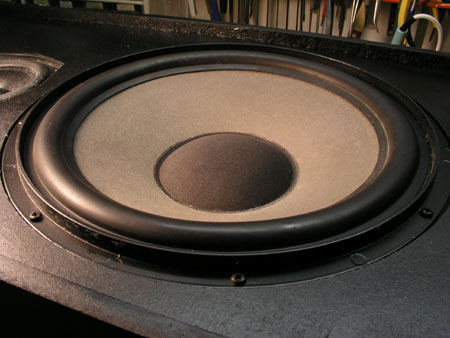 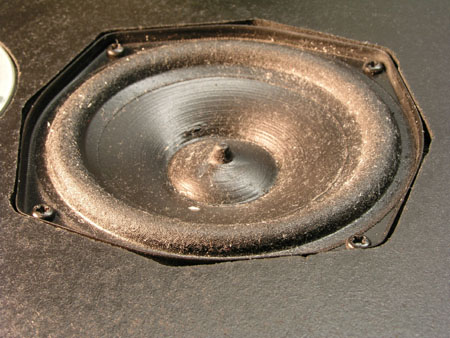
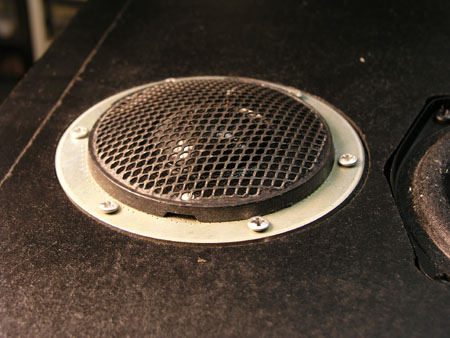 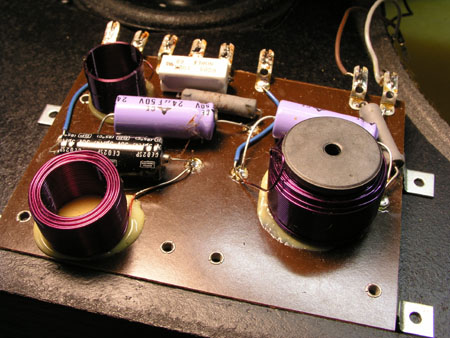
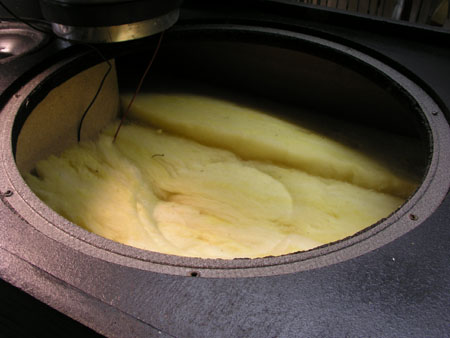
The original
crossover:
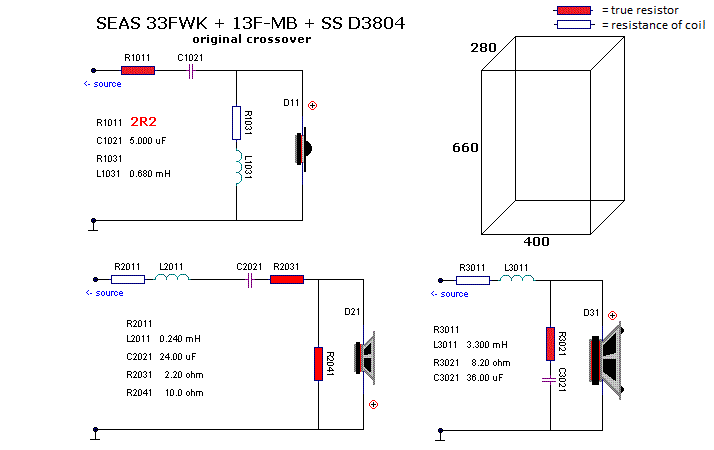
The crossover is
simplicity itself and I guess the original
tweeter, the 86H, could have performed better
compared to this D3804 replacement. This is what
often happens if we uncritically swap tweeters:
Polarity may get wrong and the frequency response
of the new driver may not fit at all with the
other drivers. The 2R2 (later changed to 4R7) is
not in the original crossover. Here inserted to
level the treble response. Only the midrange
driver has to be connected with inverted
polarity.
The bass driver is taking care of quite some
frequency range and the apparent point of
crossover between bass and mid is around 700-800
Hz, well in accordance with the SEAS specs.
|
Measurements:
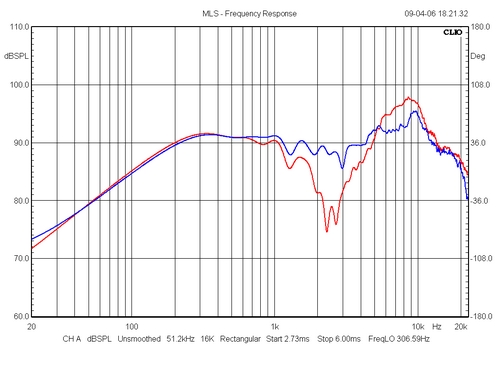
Red = as I received the
speakers. Tweeter had negative polarity and a
huge dip around 2.5 kHz was the result. The
treble level in the 5-10 kHz range is some 6-8 dB
above average level. Not a pleasant sound I can
tell.
Changing tweeter polarity made the blue graph and
adding a 2R2-4R7 resistor in series with the
tweeter made an even smoother response as can be
seen later.
|
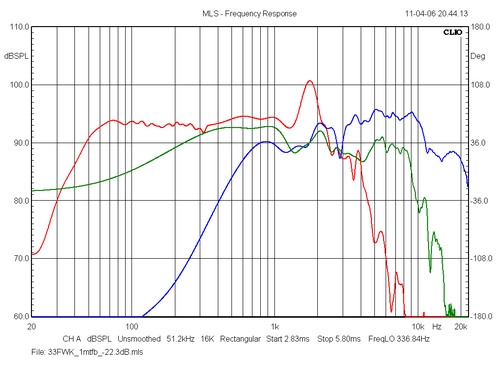
Individual response of
drivers without crossover attached. The bass has
a significant bump at 1700 Hz, which is a little
strange as I have a pair of 33F-WKA
drivers that hasn't. See below.
The mid response has been seen worse and I'm not
sure this is up to the original performance. The
fabric outer suspension is rather rigid, but
maybe it was supposed to be so when new.
The metal grille probably compromises the D3804
performance and the roll-off above 10 kHz is in
accordance with the current D3806, though the
latter reaches higher.
|
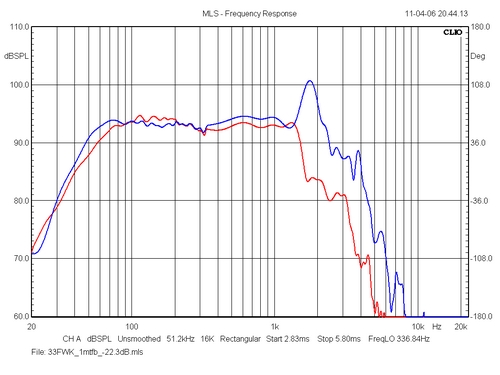
The 33F-WK bass drivers
in these cabinets are not identical to the two
33F-WKA drivers I have. The
"33F" was made in a number of versions:
33F-WB, 33F-WK, 33F-WKA and 33F-ZBX and some of
these with "DD", dynamic damping:.The
"DD" refers to "two high
conducting rings placed at each end of the motor
coil. These act as eddy current brakes, firmly
halting additional cone excursion as the rings
enter the magnetic field". Thanks to Martin
Colloms/High Performance Loudspeakers, page 79,
6th edition.
Looking at the data files on the
SEAS
website, the drivers in these cabs are
close to the 33F-WB although the membrane mass
appear to be somewhat higher. My own bass drivers
are close to the 33F-WKA, having a higher BL -
and most importantly, a 4-layer voice coil
causing a steep increase in impedance towards
higher frequencies.
Most likely the bump at 1700 Hz is caused by a
thinner cone compared to my WKA.
None of the drivers in the SEAS files indicate a
fabric dust cap and I think we have to conclude
these drivers were made in quite a number of
versions, not all recorded in the brochures
available. Here the TS data as measured by the
added volume method (47 litre closed cab used).
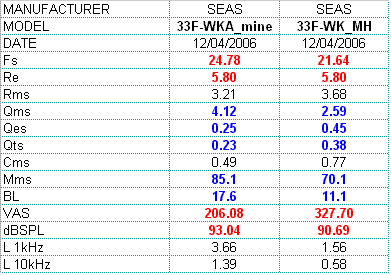 : :
|
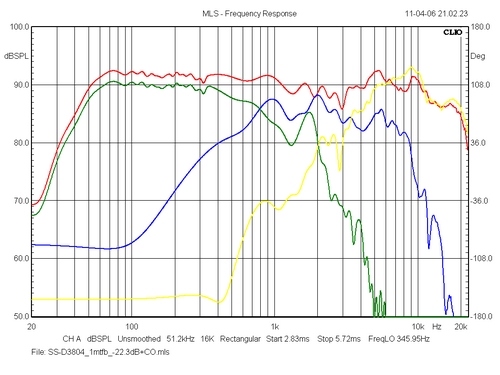
Above the individual
response of drivers from the crossover. Apparent
points of crossover are 700-800 Hz for bass and
mid and 4-6 kHz for mid and tweeter. The latter
not easy to determine, not even by reversing
polarity of tweeter.
|
Modified
crossover for
33F-WK
+ 13F-MB + D3804
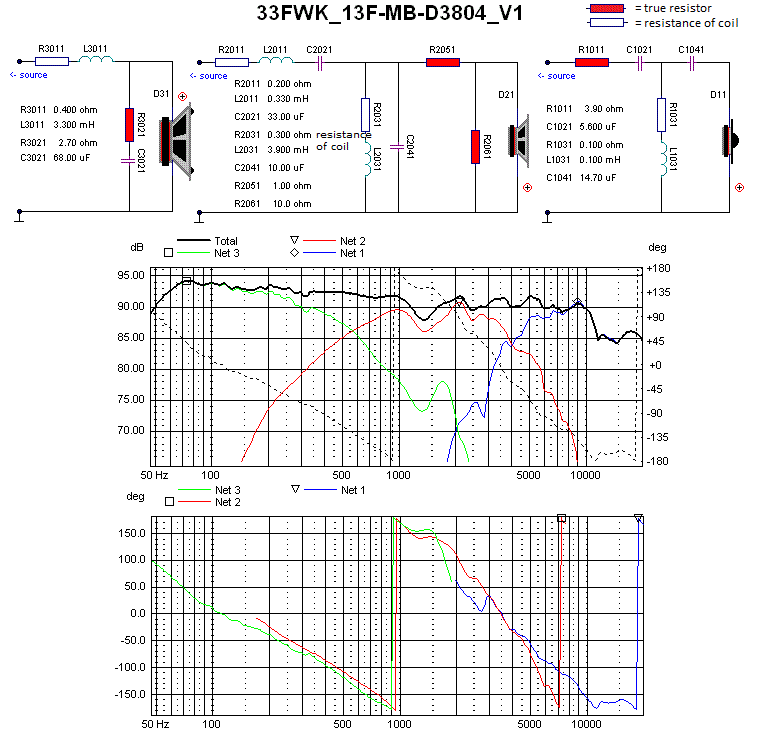
New crossover from LspCAD
simulation and some manual fine-tuning. Generally
this will provide a more balanced presentation
and now the tweeter and mid doesn't share the
5-10 kHz region.
|
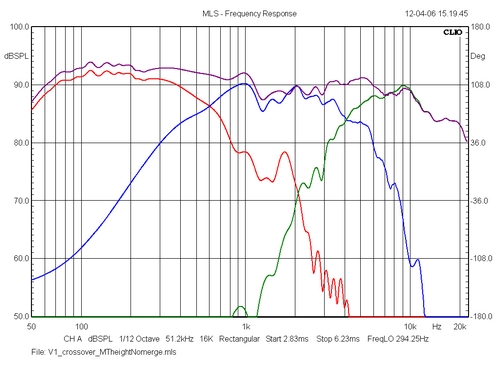
Measured response from
new crossover. This is actually well in
accordance with the LspCAD prediction. The mid
and tweeter now handle what they're good at
respectively and despite the lack of level above
10 kHz, this sounds very good indeed. Most likely
the 86H tweeter may still be in place should you
own a pair of these speakers and should you
decide to give the 503 kit a second chance, read
below.
|
More 3804 images:
(-
just had to)
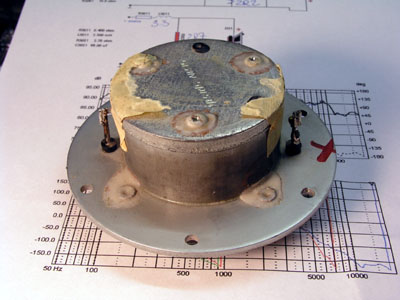 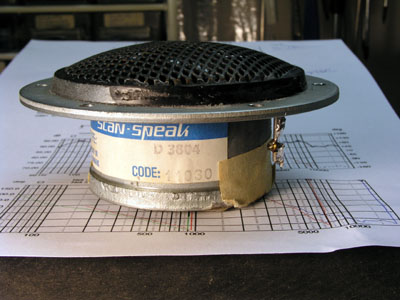
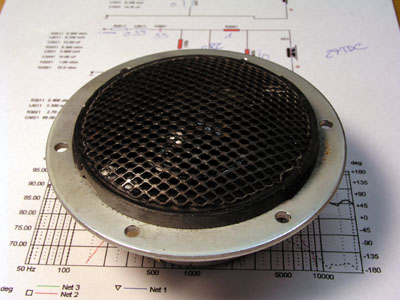 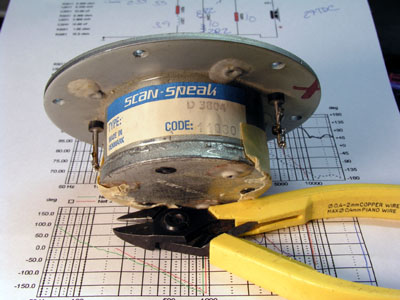
New tweeter, SEAS 27TDC
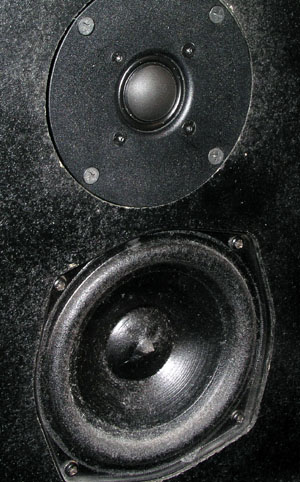

Components in blue are different to the D3804 version.
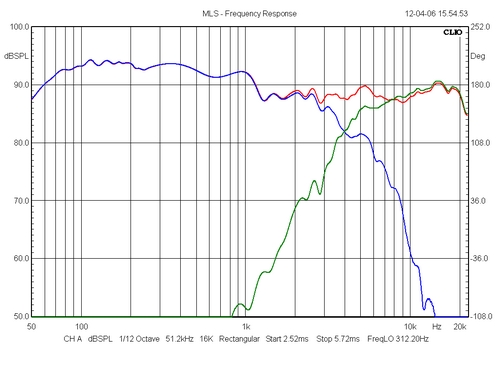
Point of crossover is
maintained at 4 kHz. Don't pay too much attention
to the overall balance presented here. Merging
frequency response files can be done in numerous
ways and the 250 Hz chosen here is not correct in
terms of displaying the sensitivity of the system
in the 100-500 Hz region.
|
Aftermath
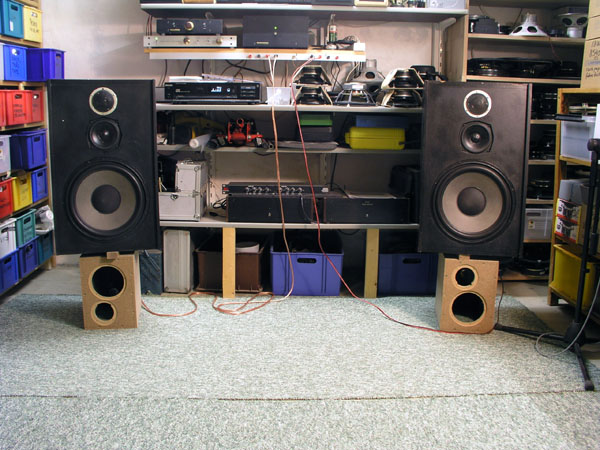
Routing front panels is
one of my routines in the
workshop and
while doing so today - or rather in between - due
to the noise - I listen to music, and this
afternoon I had brought two CDs: Nils
Lofgren/Acoustic Live and Mark Knofler/Sailing to
Philadelphia. I wanted to check out male voices
on these old speakers. After some listening I
increased the attenuation of the tweeter by
replacing the 2R2 with 4R7 and this took away
some of the (still) treble forwardness from the
D3804 dome (the original crossover still in
place). It's a bit tricky with the D3804 as you
would like it to do a little above 10 kHz, which
causes the 5-10 kHz region to be ~2 dB too high.
But better level the 5-10 kHz region and forget
about the top octave.
It's not often you sit in front of a pair of
speakers and have this spine chilling feeling
when the music starts. Play track 5 from Nils
Lofgren, play it loud - real loud - and it's like
sitting front row, looking up on the guitar. It's
all there.
Forget about silver cables, golden binding posts,
Mundorf Supreme and all that crap! Get an old
12-13" (good) paper cone and let it run up
to 5-600 Hz. Give it 50-100 litres of volume or
as much as your wife allows. Get a decent 5"
paper mid and don't pay more than 50 $ for the
tweeter! Get some electrolytic caps and - most
importantly - make a good crossover and you're
there.
|
